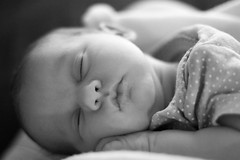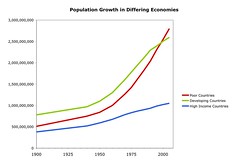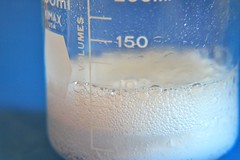| 5833135787 | crossing over | Process in which homologous chromosomes exchange portions of their chromatids during meiosis. | | 0 |
| 5833140911 | law of independent assortment | One of Mendel's principles that states that genes for different traits can segregate independently during the formation of gametes | | 1 |
| 5833144576 | law of segregation | (genetics) the separation of paired alleles during meiosis so that members of each pair of alleles appear in different gametes | | 2 |
| 5833148036 | random fertilization | source of genetic variation caused by the unlimited number of possible sperm & egg combinations | | 3 |
| 5833150864 | heterozygous | An organism that has two different alleles for a trait | | 4 |
| 5833152936 | monohybrid cross | A cross between individuals that involves one pair of contrasting traits | | 5 |
| 5833155751 | dihybrid cross | A cross between two individuals, concentrating on two definable traits | | 6 |
| 5833158780 | allele | An alternative form of a gene. | | 7 |
| 5833161345 | gene | A discrete unit of hereditary information consisting of a specific nucleotide sequence in DNA (or RNA, in some viruses). Codes for RNA, polypeptides, and proteins | | 8 |
| 5833164474 | synapsis | Pairing of homologous chromosomes. homologous chromosomes loosely pair up
-align gene by gene
-get together with homologous pair | | 9 |
| 5833167716 | dominant allele | An allele that will determine phenotype if just one is present in the genotype | | 10 |
| 5833172225 | recessive allele | An allele that is masked when a dominant allele is present | | 11 |
| 5833174267 | phenotype | An organism's physical appearance, or visible traits. | | 12 |
| 5833176681 | genotype | An organism's genetic makeup (alleles for a particular gene) | | 13 |
| 5833179025 | test cross | the crossing of an individual of unknown genotype with a homozygous recessive individual to determine the unknown genotype | | 14 |
| 5833181440 | rule of multiplication | A statistical rule stating that the probability of two independent events occurring together is the product of their individual probabilities. | | 15 |
| 5833184577 | rule of addition | A statistical rule stating that the probability of either of two independent (and mutually exclusive) events occurring is the sum of their individual probabilities minus the probability of them both occurring together. | | 16 |
| 5833188515 | complete dominance | A relationship in which one allele is completely dominant over another | | 17 |
| 5833191314 | incomplete dominance | A type of inheritance in which two contrasting alleles contribute to the individual a trait not exactly like either parent; blending inheritance. | | 18 |
| 5833193364 | codominance | Both alleles are equally expressed | | 19 |
| 5833196678 | multiple alleles | three or more forms of a gene that code for a single trait (but each individual only has 2) | | 20 |
| 5833198671 | pedigree | A diagram that shows the occurrence of a genetic trait in several generations of a family | | 21 |
| 5833201364 | cystic fibrosis | an autosomal recessive disorder creating thick sticky mucus which is hard to expel | | 22 |
| 5833205416 | Tay-Sachs | A human genetic disease caused by a recessive allele for a dysfunctional enzyme, leading to accumulation of certain lipids in the brain. Seizures, blindness, and degeneration of motor and mental performance usually become manifest a few months after birth. | | 23 |
| 5833207702 | Sickle cell | A human genetic disease of red blood cells caused by the substitution of a single amino acid in the hemoglobin protein; creating sickle shaped red blood cells that collect in vessels causing pain and reduced gas exchange | | 24 |
| 5833212635 | lethal dominant allele | having a single dominant allele results in death | | 25 |
| 5833216115 | Huntington's disease | progressive hereditary disorder characterized by uncontrolled movements- changes in cortex & cerebellum | | 26 |
| 5833219350 | sex-linked genes | a gene that is carried on the X or Y chromosome | | 27 |
| 5833221694 | X chromosome | The sex chromosome found in both men and women. Females have two X chromosomes; males have one. An X chromosome from each parent produces a female child. | | 28 |
| 5833223368 | Y chromosome | The sex chromosome found only in males. When paired with an X chromosome from the mother, it produces a male child | | 29 |
| 5833228010 | Duchenne Muscular Dystrophy | A human genetic disease caused by a sex-linked recessive allele; characterized by progressive weakening and a loss of muscle tissue. | | 30 |
| 5833232992 | Hemophilia | A sex-linked hereditary disease where blood does not coagulate to stop bleeding | | 31 |
| 5833235389 | X-inactivation | a process by which one of the two copies of the X chromosome present in female mammals is randomly inactivated creating a Barr body | | 32 |
| 5833238751 | Barr Body | The inactivated X chromosome | | 33 |
| 5833241458 | Genetic recombination | the regrouping of genes in an offspring that results in a genetic makeup that is different from that of the parents | | 34 |
| 5833243534 | linkage map | A genetic map based on the frequencies of recombination between markers during crossing over of homologous chromosomes. | | 35 |
| 5833245521 | map unit | in chromosome mapping, an increment of 1 percent in the frequency of crossing-over | | 36 |
| 5833247842 | nondisjuction | Error in meiosis in which homologous chromosomes fail to separate. | | 37 |
| 5833250753 | aneuploidy | A chromosomal aberration in which one or more chromosomes are present in extra copies or are deficient in number. | | 38 |
| 5833255062 | polyploidy | Condition in which an organism has extra full sets of chromosomes | | 39 |
| 5833257359 | trisomy | 3 copies of a chromosome | | 40 |
| 5833259355 | monsomy | Chromosomal abnormality consisting of the absence of one chromosome from the normal diploid number | | 41 |
| 5833261545 | mutation | an event that changes the nucleotide sequence in a gene, creating a novel sequence which may have no function or a new function | | 42 |
| 5833263775 | point mutation | Gene mutation involving changes in one or a few nucleotides | | 43 |
| 5833269835 | deletion | (1) A deficiency in a chromosome resulting from the loss of a fragment through breakage. (2) A mutational loss of one or more nucleotide pairs from a gene. | | 44 |
| 5833273487 | duplication | An aberration in chromosome structure due to fusion with a fragment from a homologous chromosome, such that a portion of a chromosome is duplicated. | | 45 |
| 5833277634 | inversion | (genetics) a kind of mutation in which the order of the genes in a section of a chromosome is reversed | | 46 |
| 5833279508 | translocation | Change to a chromosome in which a fragment of one chromosome attaches to a nonhomologous chromosome | | 47 |
| 5833282099 | frameshift | Mutation that shifts the "reading" frame of the genetic message by inserting or deleting a nucleotide | | 48 |
| 5833283925 | Down Syndrome | A condition of retardation and associated physical disorders caused by an extra copy of chromosome 21. | | 49 |
| 5833286026 | KlinefelterSyndrome | A chromosomal disorder in which males have an extra X chromosome, making them XXY instead of XY. | | 50 |
| 5833291314 | Turner syndrome | a monosomic condition where a female has only 1 sex chromosome- the only known viable monosomy in humans | | 51 |
| 5833294153 | true breeding | If an organism has a certain characteristic that is always passed on to its offspring, we say that this organism bred true with respect to that characteristic. | | 52 |
| 5833296247 | linked genes | Genes located close enough together on a chromosome that they tend to be inherited together. | | 53 |
| 5833298594 | carrier | A person whose genotype includes a gene that is not expressed in the phenotype. | | 54 |
| 5833307657 | G1 | First stage of interphase in which cell grows and performs its normal functions. Cell is diploid. | | 55 |
| 5833309403 | G0 | Cell is performing its normal functions, but has left the cell cycle and is not dividing. Does not pass the G1 checkpoint | | 56 |
| 5833311459 | S phase | The synthesis phase of the cell cycle; the portion of interphase during which DNA is replicated. | | 57 |
| 5833313280 | G2 | Last stage of interphase in which cell grows and performs its normal functions. Cell is diploid. | | 58 |
| 5833315003 | Interphase | Cell grows, performs its normal functions, and prepares for division; consists of G1, S, and G2 phases | | 59 |
| 5833316544 | Prophase | Phase of mitosis in which chromosomes condense, nuclear membrane disappears, nucleolus disappears, and spindle fibers begin to form. | | 60 |
| 5833318234 | Metaphase | Phase of mitosis in which spindle fibers help chromosomes line up on the midline of the cell. | | 61 |
| 5833320565 | Anaphase | Phase of mitosis in which the chromosomes separate and move to opposite ends of the cell. | | 62 |
| 5833322681 | Telophase | Phase of mitosis during which chromosomes uncoil, a nuclear envelope returns around the chromatin, and a nucleolus becomes visible in each daughter cell" | | 63 |
| 5833325607 | cytokinesis | At the end of telophase, actin fibers form an equator around the cell and contract, separating the cytoplasm into two daughter cells. | | 64 |
| 5833328772 | centriole | A paired cluster of microtubules near the nucleus in animal cells. This organelle organizes spindle fibers during mitosis. | | 65 |
| 5833331298 | centromere | Region of a chromosome where the two sister chromatids attach to one another. Contains the kinetochore. | | 66 |
| 5833333340 | kinetochore | A specialized region on the centromere that links each sister chromatid to the mitotic spindle. | | 67 |
| 5833336314 | spindle fibers | Made of microtubules that connect centrioles to kinetochores of chromosomes and that separate sister (mitosis) or homologous (meiosis) chromosomes during cell division | | 68 |
| 5833340151 | chromosome | A threadlike, gene-carrying structure found in the nucleus. Each chromosome consists of one very long DNA molecule and associated proteins. |  | 69 |
| 5833342028 | chromatid | One of two identical "sister" parts of a duplicated chromosome. | | 70 |
| 5833343806 | haploid | A cell with only one copy of each chromosome.gamete
-contains a single set of chromosomes
-n | | 71 |
| 5833346049 | diploid | A cell with two copies of each chromosome.has two sets of chromosomes
-human # is 46
-2n | | 72 |
| 5833350697 | karyotype | Micrograph of the complete diploid set of chromosomes grouped together in pairs, arranged in order of decreasing size | | 73 |
| 5833352710 | cancer | Disorder in which some of the body's cells lose the ability to control growth; A disease in which the body cells grow & divide uncontrollably, damaging the parts of the body around them. | | 74 |
| 5833354133 | metastisis | spread of cancer cells | | 75 |
| 5833361765 | genome | consists of all the DNA in a cell
-holds specific genetic traits | | 76 |
| 5833365944 | somatic cells | have two sets of chromosomes
-go through mitosis
-nonreproductive
body cells | | 77 |
| 5833368335 | gametes | have half as many chromosomes as somatic cells
-go through meiosis
-reproductive cells | | 78 |
| 5833374435 | metaphase plate | midway point between the spindles two poles
-where chromosomes line up in metaphase | | 79 |
| 5833376185 | cleavage furrow | formed in eukaryotic cells during late telophase and cytokinesis | | 80 |
| 5833379626 | cell plate | forms in plant cells during cytokinesis | | 81 |
| 5833380978 | binary fission | prokaryotic method of reproduction and cell division
-chromosome replicates and the two daughter chromosomes actively more apart | | 82 |
| 5833383409 | cell cycle control system | directs sequential event of the cell cycle
-regulated by internal and external force
-receives signals from the cytoplasm | | 83 |
| 5833388864 | checkpoints | where the cell cycle stops until a go ahead signal is received
-G1 is the most important for many cells | | 84 |
| 5833392811 | growth factors | proteins released by certain cells that stimulate other cells to divide | | 85 |
| 5833394386 | density dependent inhibition | crowded cells stop dividing | | 86 |
| 5833399545 | tumors | masses of abnormal cells within otherwise normal tissue
-formed by cancer cells | | 87 |
| 5833401123 | benign tumor | -lump of abnormal cells remaining only at the original site of the cancer | | 88 |
| 5833402514 | malignant tumor | invade surrounding tissue | | 89 |
| 5833404222 | metastasize | exporting cancer cells to other parts of the body, where they may form secondary tumors | | 90 |
| 5833419509 | 46 | What is the chromosome number for humans? | | 91 |
| 5833422069 | homologous chromosomes | 2 chromosomes in each pair
-same length and shape
-carry genes controlling the same inherited characters | | 92 |
| 5833431668 | fertilization | the union of gametes (sperm and egg) | | 93 |
| 5833433346 | zygote | fertilized egg
-one set of chromosomes from each parent
-diploid cell
produces somatic cells by mitosis | | 94 |
| 5833435697 | prophase 1 | occupies more than 90% of the time required for meiosis
-chromosomes condense
-synapse and crossing over
-tetrads and chiasmata | | 95 |
| 5839571334 | homozygous | An organism that has identical alleles for a trait | | 96 |
| 5839584189 | Genetics | study of how characteristics are passed from parent to offspring | | 97 |
| 5839589539 | Gregor Mendel | The "father of genetics" | | 98 |
| 5839593519 | heredity | the passing of characteristics from parents to offspring | | 99 |
| 5839601698 | trait | a genetically determined characteristic | | 100 |
| 5839606729 | molecular genetics | type of genetics that studies the genes & chromosomes of an organism | | 101 |
| 5839632959 | hybrid | another name for a heterozygous genotype | | 102 |
| 5839638012 | probabilty | the chance of some event happening | | 103 |
| 5839641848 | generation | a span of time between the birth of parents & the birth of their offspring | | 104 |
| 5839656681 | P (parent) generation | the generation of true-breeding plants | | 105 |
| 5839667755 | F1 generation | offspring of a cross between the P generation | | 106 |
| 5839673594 | F2 generation | offspring of a cross between the F1 generation | | 107 |
| 5839683744 | cell | basic unit of life | | 108 |
| 5839685976 | cell cycle | an ordered sequence of events that includes when a eukaryotic cell is first formed to until it divides into two cells | | 109 |
| 5839706461 | mitosis | the process by which the nucleus of a cell divides into two nuclei | | 110 |
| 5839715969 | meiosis | the production of gamete cells | | 111 |
| 5839719171 | sister chromatid | the two chromosomes that make up a matched pair in a diploid cell | | 112 |
| 5839731610 | tetrad | a paired set of homologous chromosomes, each composed of two sister chromatids | | 113 |
| 5839739331 | punnett square | a tool used to solve probability problems | | 114 |
| 5839764139 | sex chromosome | a chromosome that determines whether on individual is a male or female | | 115 |
| 5839772254 | autosome | a chromosome not directly involved in determining the sex of an organism | | 116 |
| 5839795101 | sex influenced trait | a trait expressed in one sex but not the other | | 117 |
| 5839811500 | chromatin | the material of which the chromosomes of organisms other than bacteria (i.e., eukaryotes) are composed. It consists of protein, RNA, and DNA. | | 118 |
| 5839817188 | asexual | not involving the fusion of gametes. | | 119 |
| 5839817189 | sexual | the fusion of gametes | | 120 |
| 5839828987 | chiasmata | a point at which paired chromosomes remain in contact during the first metaphase of meiosis, and at which crossing over and exchange of genetic material occur between the strands. | | 121 |
| 5839833877 | centrosome | an organelle near the nucleus of a cell that contains the centrioles (in animal cells) and from which the spindle fibers develop in cell division. | | 122 |
| 5840909781 | cyclins | proteins that control the progression of cells through the cell cycle by activating cyclin-dependent kinase (Cdk) enzymes. | | 123 |
| 5841039284 | syngamy | the fusion of two cells, or of their nuclei, in reproduction. | | 124 |
| 5841046037 | variation | a change or difference in condition, amount, or level, typically with certain limits. | | 125 |
| 5841053902 | synaptonemal complex | a ladderlike series of parallel threads; adjacent to and coaxial with pairing chromosomes in meiosis. | | 126 |
| 6161025015 | | | | 127 |











































































